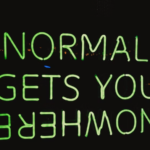Extra Credit is a weekly column serving up a fresh helping of news, updates and resources from the education world. Want more? Sign up now for SmartBrief’s free education newsletters.

What hula hoops have to do with sex ed. Alarmists who cringe upon the mention of sex education in elementary school needn’t worry about bananas and condoms; the lessons are about broader concepts and have little obvious connection to sex. For example, each child may get a hula hoop to represent personal boundaries. “When we’re talking about consent with kindergartners, that means getting permission before you touch someone else; asking if it’s OK if you borrow somebody’s toy or pencil or game, so that kids start to learn about personal boundaries and consent in really age- and developmentally appropriate ways,” Nora Gelperin, director of sex education and training at Advocates for Youth, says.
Listen more, talk less, curtail social media (unless you’re forwarding this column!). This story is from Sept. 6, but — especially as I continue to ruminate about how our country needs a gigantic, lifelong anger management class — it’s really important reading. An Education Week survey suggests that more adults than children engage in binary, my-way-or-the-highway thinking, and history teacher, historian and author Chris Dier says that students “are more willing to engage in difficult conversations.” Kevin Bushweller’s piece explains slow versus fast thinking (slow is better) and the dangers of conflating ideas with personality or character traits.

We can’t pretend “normal” ever really worked. “Deep systemic flaws in education” and a lack of support — rather than his students or his school — finally led Pittsburgh math teacher Justin Aion, and others like him, to quit. But replacing teachers is costly, and students benefit academically and emotionally from consistency, stability and being able to connect with a teacher. Nevertheless, from a systemic standpoint, “back to normal” seems to be the predominant path. This article doesn’t offer any solutions — but it does offer a pretty clear warning if we can’t quickly find a new fork in the road.
Creating better partnerships between industry and education. A common complaint about higher education is that professors are too far removed from real-world applications of the subject matter. The National Science Foundation is addressing the problem by adding five more hubs to its I-Corps initiative for a total of 10. NSF says the hubs are designed to provide “experiential entrepreneurial training to academic researchers across all fields of science and engineering.” Ian McClure, executive directory of the University of Kentucky’s UK Innovate, says, “We aim to reduce the time and risk associated with translating promising ideas and technologies from the laboratory to the marketplace, to encourage collaboration between academia and industry, and to train NSF-funded faculty, students, postdocs and other researchers in innovation and entrepreneurship skills.”
Additional interesting education takes
Thought I’d share some recent SmartBrief Education original articles:
- How principals can make discipline a teachable moment
- Life and leadership: Turning lemons into lemonade
Diane Benson Harrington is an education writer at SmartBrief. Reach out to her via email, Twitter or LinkedIn.
Opinions expressed by SmartBrief contributors are their own.
_________________________
Subscribe to SmartBrief’s FREE email ASCD newsletter to see the latest hot topics in education. It’s among SmartBrief’s more than 250 industry-focused newsletters.
